MINISTRY OF EDUCATION AND TRAINING THAI NGUYEN UNIVERSITY
BUI VIET HUONG
DETERMINATION OF NONLINEAR HEAT TRANSFER LAWS AND SOURCES IN HEAT CONDUCTION
Speciality: Mathematical Analysis Code: 62 46 01 02
THAI NGUYEN–2015
SUMMARY OF DOCTORAL DISSERTATION IN MATHEMATICS
This dissertation is completed at: College of Education - Thai Nguyen University, Thai Nguyen, Viet Nam
Scientific supervisor: Prof. Dr. habil. Dinh Nho H`ao
Reviewer 1:..............................................................
Reviewer 2: .............................................................
Reviewer 3: ...............................................................
The dissertation will be defended in front of the PhD dissertation university committee level at:
· · · · · · am/pm date · · · · · · month · · · · · · year 2015.
The dissertation can be found at:
- National Library - Learning Resource Center of Thai Nguyen University - Library of the College of Education – Thai Nguyen University
Introduction
The process of heat transfer or diffusion are often modelled by boundary value problems for parabolic equations: when the physical domain, the coefficients of equations, the initial condition and boundary conditions are known, one studies the boundary value problems and then bases on them to predict about the processes under consideration. This is forward problem for the process under consideration. However, in practice, sometimes the physical domain, or the coefficients of the equa- tions, or boundary conditions, or the initial condition are not known and one has to define them from indirect measurements for reconstructing the process. This is inverse problem to the above direct problem and it has been an extensive research arrear in mathematical modelling and differential equations for more than 100 years. Two important conditions for modelling a heat transfer process are the law of heat transfer on the boundary of the object and heat sources generated heat conduction. These conditions are generated by external sources and are not always known in advance, and in this case, we have to determine them from indirect measurements and these are the topics of this thesis. The thesis consists of two parts, the first one is devoted to the problem of determining the law of heat exchange (generally nonlinear) on the boundary from boundary measurements and the second one aims at determining the source (generated heat transfer or diffusion) from different ob- servations. In Chapter 1, we consider the inverse problem of determining the function g(·, ·) in the initial boundary value problem
in Q, in Ω, (0.6)
= g(u, f ) on S, ut − ∆u = 0 u(x, 0) = u0(x) ∂u ∂ν
from the additional condition
t ∈ [0, T ]. (0.4) u(ξ0, t) = h(t),
As the additional condition (0.4) is pointwise, it does not always have a meaning if the solution is understood in the weak sense as we intend to use in this paper. Therefore, we consider the following alternative conditions. 1) Observations on a part of the boundary:
(x, t) ∈ Σ, (0.7) u|Σ = h(x, t),
1
where Σ = Γ × (0, T ], Γ is a non-zero measure part of ∂Ω;
2
(cid:90)
2) Boundary integral observations:
∂Ω
lu := ω(x)u(x, t)dS = h(t), t ∈ (0, T ], (0.8)
where ω is a non-negative function defined on ∂Ω, ω ∈ L1(∂Ω) and (cid:82) ∂Ω ω(ξ)dξ > 0. We note that if we take ω as approximations to the Dirac δ-function, then the observations (0.8) can be considered as an averaged version of (0.4). Such integral observations are alternatives to model pointwise measurements (thermocouples have non-zero width) and they will make variational methods for the inverse problem much easier. In addition, setting the problem as above, we can determine the heat transfer laws on the boundary from measurements only on a part of the boundary that is quite important in practice.
For each inverse problem, we will outline some well-known results on the direct problem (0.6), then suggest the variational method for solving the inverse problem where we prove the existence result for it as well as deliver the formula for the gradient of the functional to be minimized. The numerical methods for solving the inverse problem are presented at the end of each section.
The second part of the thesis is devoted to the problem of determining the source in heat conduction processes. This problem attracted great attention of many researchers during the last 50 years. Despite a lot of results on the existence, uniqueness and stability estimates of a solution to the problem, its ill-posedness and possible nonlinearity make it not easy and require further investigations. To be more detailed, let Ω ∈ Rd be a bounded domain with the boundary Γ. Denote the cylinder Q := Ω × (0, T ], where T > 0 and the lateral surface area S = Γ × (0, T ]. Let
aij, aij = aji,
Rn,
Rn ≤
i,j=1
i, j ∈ {1, 2, . . . , n}, b ∈ L∞(Q), i, j ∈ {1, 2, . . . , n}, n (cid:88) λ(cid:107)ξ(cid:107)2 ∀ξ ∈ Rn, aij(x, t)ξiξj ≤ Λ(cid:107)ξ(cid:107)2
0 ≤ b(x, t) ≤ µ1, a.e. in Q, u0 ∈ L2(Ω), ϕ, ψ ∈ L2(S), λ and Λ are positive constants and µ1 ≥ 0.
(cid:18)
(cid:19)
n (cid:88)
Consider the initial value problem
i,j=1
− + b(x, t)u = F, (x, t) ∈ Q, aij(x, t) ∂u ∂t ∂ ∂xi ∂u ∂xj
x ∈ Ω, u|t=0 = u0(x),
with either the Robin boundary condition
+ σu|S = ϕ on S, ∂u ∂N
or the Dirichlet boundary condition
u|S = ψ on S.
3
n (cid:88)
Here,
i,j=1
|S := (aij(x, t)uxj ) cos(ν, xi)|S, ∂u ∂N
ν is the outer unit normal to S and σ ∈ L∞(S) which is supposed to be nonnegative everywhere in S.
The direct problem is that of determining u when the coefficients of the equation (2.7) and the data u0, ϕ (or ψ) and F are given [?, ?, ?]. The inverse problem is that of identifying the right hand side F when some additional observations of the solution u are available. Depending on the structure of F and observations of u we have different inverse problems:
• Inverse Problem (IP) 1: F (x, t) = f (x, t)h(x, t) + g(x, t), find f (x, t), if u is given in Q. This problem has been studied by Vabishchevich (2003), Lavrente’v and Maksimov (2008).
• IP2: F (x, t) = f (x)h(x, t) + g(x, t), h and g are given. Find f (x), if u(x, T ) is given. This problem has been studied by Hasanov, Hettlich, Iskenderov, Kamynin and Rundell ... . Moreover, the inverse problem for nonlinear equations has been investigated by Gol’dman.
• IP2a: F (x, t) = f (x)h(x, t) + g(x, t), h and g are given. Find f (x),
if (cid:82) Ω ω1(t)u(x, t)dx is given. Here, ω1 is in L∞(0, T ) and nonegative. Fur- thermore, (cid:82) T 0 ω1(t)dt > 0. Such an observation is called integral observation and it is a generalization of the final observation in IP2, when ω1 is an ap- proximation to the delta function at t = T . This problem has been studied by Erdem, Lesnic, Kamynin,Orlovskii and Prilepko.
• IP3: F (x, t) = f (t)h(x, t) + g(x, t), h and g are given. Find f (t), if u(x0, t) is given. Here, x0 is a point in Ω. Borukhov and Vabishchevich, Farcas and Lesnic, Prilepko and Solov’ev have studied this problem.
Ω ω2(x)dx > 0.
• IP3a: F (x, t) = f (t)h(x, t)+g(x, t), h and g are given. Kriksin and Orlovskii, Ω ω2(x)u(x, t)dx is given. Orlovskii considered the problem: find f (t), if (cid:82) Here, ω2 ∈ L∞(Ω) with (cid:82)
• IP4: F (x, t) = f (x)h(x, t) + g(x, t), h and g are given. Find f (x) if an additional boundary observation of u, for example, in case of the Dirichlet boundary condition, we require the Neumann condition be given in a subset of S, The results for this problems can be found in the works of Cannon et al (1968, 1976, 1998), Choulli and Yamamoto (2004, 2006), Yamamoto (1993, 1994). A similar problem for identifying f (t) with F (x, t) = f (t)h(x, t) + g(x, t) has been studied by Hasanov et al (2003).
• IP5: Find point sources from an additional boundary observation are studied by Andrle, El Badia, Dinh Nho H`ao, ... A related inverse problem has been studied by Hettlich v Rundell (2001).
We note that in IP1, IP2, IP2a to identify f (x, t) or f (x) the solution u should be available in the whole physical domain Ω that is hardly realized in practice. To overcome this deficiency, we now approach to the source inverse problem from
4
(cid:90)
another point of view: measure the solution u at some interior (or boundary) points x1, x2, . . . , xN ∈ Ω (or on ∂Ω) and from these data determine a term in the right hand side of (2.7). As any measurement is an average process, the following data are collected:
Ω
i = 1, 2, . . . , N, liu = ωi(x)u(x, t)dx = hi(t), hi ∈ L2(0, T ),
with ωi ∈ L∞(Ω) and (cid:82) Ω ωi(x)dx > 0, i = 1, 2, . . . , N , being weight functions, N the number of measurements. Further, it is clear that if only lku are available, the uniqueness will not be guaranteed except for the case of determining f (t) in IP3, IP3a (can see in the article by Borukhov and Vablishchevich (1998, 2000), the article by Prilepko and Solovev (1987)). Hence, to avoid this ambiguity, assume that an a-priori information f ∗ of f is available which is reasonable in practice. In short, our inverse problem setting is as follows:
Suppose that lku = hk(t), k = 1, 2, . . . , N, are available with some noise and an a-priori information f ∗ of f is available. Identify f .
N (cid:88)
This inverse problem will be investigated by the least squares method: minimize the functional
L2(0,T ) +
i=1
Jγ(f ) = (cid:107)liu − hi(cid:107)2 (cid:107)f − f ∗(cid:107)2 ∗ γ 2 1 2
with γ being a regularization parameter, (cid:107) · (cid:107)∗ an appropriate norm. We want to emphasize that Dinh Nho H`ao has used this variational method to solve inverse heat conduction problems and proved that it is efficient.
We prove that the Tikhonov functional is Fr´echet differentiable and derive a formula for the gradient via an adjoint problem. Then we discretize the variational problem by the finite element method (FEM) and solve the discretized variational problem is numerically by the conjugate gradient method. The case of determining f (t) is treated by the splitting method. Some numerical examples are presented for showing the efficiency of the method.
Chapter 1
Determination of nonlinear heat transfer laws from boundary observations
1.1. Some supplementary knowledge
Let Ω ⊂ Rn, n ≥ 2 be a Lipschitz bounded domain with boundary ∂Ω := Γ, T > 0 a real, Q = Ω × (0, T ). Consider the initial boundary value problem for the linear parabolic equation
(1.1)
in Q, on Σ = Γ × (0, T ), in Ω. yt − ∆y + c0y = f ∂νy + αy = g y(·, 0) = y0(·)
(cid:90)
(cid:16) (cid:90) T
(cid:17)1/2
(cid:0)|y(x, t)|2 + |∇y(x, t)|2(cid:1) dxdt
We assume that c0, α, f and g are functions depending on (x, t), such that c0 ∈ L∞(Q), α ∈ L∞(Σ) and α(x, t) ≥ 0 a.e. in (x, t) ∈ Σ and f ∈ L2(Q), g ∈ L2(Σ), y0 ∈ L2(Ω). Definition 1.1 We denote by H 1,0(Q) the normed space of all (equivalence classes of) functions y ∈ L2(Q) having first-order weak partial derivatives with respect to x1, · · · , xn in L2(Q) endowed with the norm
0
Ω
. (cid:107)y(cid:107)H 1,0(Q) =
Definition 1.2 The space H 1,1(Q) defined by
H 1,1(Q) = (cid:8)y ∈ L2(Q) : yt ∈ L2(Q) and Diy ∈ L2(Q), ∀i = 1, · · · , n(cid:9) ,
(cid:90)
(cid:16) (cid:90) T
(cid:17)1/2
is a normed space with the norm
(cid:0)|y(x, t)|2 + |∇y(x, t)|2 + |yt(x, t)|2(cid:1) dxdt
0
Ω
5
. (cid:107)y(cid:107)H 1,1(Q) =
6
(cid:17)1/2
(cid:16) (cid:90) T
(cid:0)(cid:107)y(t)(cid:107)2
(cid:1) dt
Definition 1.5 Let V be a Hilbert space. We denote by W (0, T ) the linear space of all y ∈ L2(0, T ; V ), having a (distributional) y(cid:48) ∈ L2(0, T ; V ∗) equipped with the norm
V + (cid:107)y(cid:48)(t)(cid:107)2 V ∗
0
. (cid:107)y(cid:107)W (0,T ) =
(cid:90) T
(cid:90) T
(cid:10)u(cid:48)(t), v(cid:48)(t)(cid:11)
The space W (0, T ) = (cid:8)y : y ∈ L2(0, T ; V ), y(cid:48) ∈ L2(0, T ; V ∗)(cid:9) is a Hilbert space with a scalar product
V ∗ dt.
0
0
(cid:104)u, v(cid:105)W (0,T ) = (cid:104)u(t), v(t)(cid:105)V +
1.2. Determination of nonlinear heat transfer laws
from boundary integral observations
1.2.1. Direct problem
Consider the initial boundary value problem
in Q, in Ω, (1.8)
= g(u, f ) on S, ut − ∆u = 0 u(x, 0) = u0(x) ∂u ∂ν
I (S). Then u ∈ H 1,0
I (Ω) and f ∈ L2
I
Here, g : I × I → R (with I a subinterval of R) is assumed to be locally Lipschitz continuous, monotone decreasing in u and increasing in f and to satisfy g(u, u) = 0, u0 and f are given functions with range in I belonging, respectively, to L2(Ω) and L2(S). Throughout, we assume that g satisfies this condition, and write that as g ∈ A. Let J be a subinterval of I, we use J as a subscript on function spaces to denote
(cid:90)
(cid:16)
(cid:17)
the subset of functions having essential range in J. Definition 1.6 Let u0 ∈ L2 (Q) is said to be a weak solution of (1.8) if g(u, f ) ∈ L2(S) and for all η ∈ H 1,1(Q) satisfying η(·, T ) = 0,
Q
(cid:90)
(cid:90)
dxdt − u(x, t)ηt(x, t) + ∇u(x, t) · ∇η(x, t)
S
Ω
= g(u(x, t), f (x, t)) η(x, t)dSdt. u0(x)η(x, 0)dx +
J (Ω) and f in L2
I (S) the space of all y ∈ L2(S), having a domain in I belonging. Here, we denote by L2 Theorem 1.6 Let J be a subinterval of I such that g(u, f ) is uniformly Lipschitz continuous on J × J. Then, for every u0 in L2 J (S), the problem (1.8) has a unique weak solution. From now on, to emphasize the dependence of the solution u on the coefficient g, we write u(g) or u(x, t; g) instead of u. We prove that the mapping u(g) is Fr´echet differentiable in g. In doing so, first we prove that this mapping is Lipschitz continuous. To this purpose, we assume that
(1.9)
7
g(u, f ) is continuously differentiable with respect to u in I and denote that by g ∈ A1.
I (S). Then there exists a constant c such that
I (Ω) and f ∈ L∞
Lemma 1.1 Let g1, g2 ∈ A1 such that g1 − g2 ∈ A. Denote the solutions of (1.8) corresponding to g1 and g2 by u1 and u2, respectively. Further, suppose that u0 ∈ L2
I (I×I).
I (Ω), f ∈ L∞
(cid:107)u1 − u2(cid:107)W (0,T ) + (cid:107)u1 − u2(cid:107)C(Q) ≤ c(cid:107)g1 − g2(cid:107)L∞
Theorem 1.9 Let u0 ∈ L2 I (S) and g ∈ A1. Then the mapping g (cid:55)→ u(g) is Fr´echet differentiable in the sense that for any g, g + z ∈ A1 there holds
= 0. (1.16) lim (cid:107)z(cid:107)L∞(I×I)→0 (cid:107)u(g + z) − u(g) − η(cid:107)W (0,T ) (cid:107)z(cid:107)C1(I)
1.2.2. Variational problem
The variational method aims to find the minimum of the functional
L2(0,T )
(cid:107)lu(g) − h(cid:107)2 J(g) = (1.20) on A1. 1 2
(cid:90)
Theorem 1.10 The functional J(g) is Fr´echet differentiable in A1 and its gradient has the form
S
∇J(g)z = z(u(g))ϕ(x, t)dSdt. (1.21)
Here, ϕ(x, t) is the solution of the adjoint problem
(cid:16) (cid:82)
in Q, in Ω,
(cid:17) ∂Ω ω(x)u(g)|SdS − h(t)
on S. = ˙gu(u(g))ϕ + ω(x) −ϕt − ∆ϕ = 0 ϕ(x, T ) = 0 ∂ϕ ∂ν
(cid:90)
From this statement, we can derive the necessary first-order optimality condition of the functional J(g). Theorem 1.11 Let g∗ ∈ A1 be a minimizer of the functional (1.20) over A1. Then for any z = g − g∗ ∈ A1,
S
∇J(g∗)z = z(u∗(g∗))ϕ(x, t; g∗)dSdt ≥ 0, (1.23)
where u∗ is the solution of (1.8), ϕ(x, t; g∗) is the solution of the adjoint problem with g = g∗.
(cid:110)
We prove the existence of a minimizer of the function (1.20) over an admissible set. Following R¨osch, we introduce the set A2 as follows
(cid:111) .
A2 := g ∈ C1,α[I], m1 ≤ g(u) ≤ M1, M2 ≤ ˙g(u) ≤ 0, ∀u ∈ I,
≤ C | ˙gu(u1) − ˙gu(u2)| |u1 − u2|ν sup u1,u2∈I
8
(cid:110)
(cid:111) .
Here, ν, m1, M1, M2 and C are given. Suppose that u0 ∈ Cβ(Ω) for some constant β ∈ (0, 1]. Then, according to Raymond and Zidani, we have u ∈ Cγ,γ/2(Q) withγ ∈ (0, 1) . Set
(g, u(g)) : g ∈ A2; u ∈ Cγ,γ/2(Q) Tad :=
Lemma 1.2 The set Tad is precompact in C1[I] × C(Q). Theorem 1.12 The set Tad is closed in C1[I] × C(Q). Theorem 1.13 The problem of minimizing J(g) over A2 admits at least one solu- tion.
1.2.3. Numerical results
(cid:18)
(cid:19)
In terms of the problem (1.8) with integral observation (0.8) we use the boundary element method to solve the direct and adjoint problems and iterative Gauss-Newton methods to find the minimum of the functional (1.20). We tested our algorithms for the two-dimensional domain Ω = (0, 1) × (0, 1), T = 1 and the exact solution to be given by
exp − , (1.32) uexact(x, t) = 100 4πt |x − x0|2 4t
4π e−2].
where x0 = (−2, −2). Note that from (1.32) the minimum of u occurs at t = 0 giving the initial condition u(x, 0) = u0(x) = 0, while the maximum of u occurs at t = T = 1 and x = (0, 0) giving u((0, 0), 1) = 100 4π e−2. Thus, in this case, we can evaluate the interval [A, B] = [0, 100
We consider the physical examples of retrieving a linear Newton’s law and a nonlinear radiative fourth–power in the boundary condition which is written in the slight modified notation form
on S, = g(u) − gexact(f ), ∂u ∂ν
where the input function f is given by
f = on S. + uexact, ∂uexact ∂ν
(cid:19)1/4
In the linear case, we have gexact(f ) = −f with
exact
(cid:18) ∂uexact ∂ν
, on S. f = + u4
In the nonlinear boundary case gexact(f ) = −f 4.
One can calculate the extremum points of the function f on S S, we obtain that [m := minS f ; M := maxS f ] ⊃ [A, B] = [0, 100 4π e−2] . From Lemma 1.7.2, we know that m ≤ u ≤ M , however, in we have taken that the full information about the end points A and B is available and [A, B] is a subset of the known interval [m, M ] with M and m are bounded since u0 and f are given.
9
We also investigate two weight functions in the boundary integral observations (0.8), namely,
(cid:40)1 ε 0
if ξ ∈ [(0; 0), (ε, 0)], ω(ξ) = ε = 10−5, (1.33) otherwise,
2 + 1,
1 + ξ2
and ω(ξ) = ξ2
(1.34) where ξ = (ξ1, ξ2). Note that the weight (1.33) with ε anishingly small is supposed to mimic the case of a pointwise measurement (0.4) at the origin ξ0 = (0; 0). We employ the Gauss-Newton method for minimizing the cost functional (1.20), namely,
L2(0,T ) =:
L2(0,T ).
J(g) = (cid:107)lu(g) − h(cid:107)2 (cid:107)Φ(g)(cid:107)2 (1.35) 1 2 1 2
L2(I), Method 1 (M1),
L2(0,T ) +
(cid:107)z(cid:107)2 (1.36) (cid:107)Φ(gn) + Φ(cid:48)(gn)z(cid:107)2 For a given gn, we consider the sub–problem to minimize (with respect to z ∈ L2(I)) αn 2 1 2
hoc
L2(0,T ) +
L2(I), Method 2 (M2).
(1.37) (cid:107)Φ(gn) + Φ(cid:48)(gn)z(cid:107)2 (cid:107)z − gn + g0(cid:107)2 αn 2 1 2
Then we update the new iteration as
(1.38) gn+1 = gn + 0.5z.
Here we choose the regularization parameters
. (1.39) αn = 0.001 n + 1
The direct and inverse problems are solved using the boundary element method (BEM) with 128 boundary elements and 32 times steps. We also use a partition of the interval [A, B] into 32 sub-intervals.
We present the numerical results for both cases of linear and nonlinear unknown functions g(u) using methods M1 and M2 for several choices of initial guess g0 and noisy data ||hδ − h||L2(0,T ) ≤ δ. The results presented in the thesis show that our method is effective0.
1.3. Determination of nonlinear heat transfer laws from observations on a part of the boundary
Consider the problem (1.8)
in Q, in Ω,
0The numerical results are presented in detail in the thesis.
= g(u, f ), on S = ∂Ω × (0, T ). ut − ∆u = 0, u(x, 0) = 0, ∂u ∂ν
10
We find the function u(x, t) and g(u, f ) from observations on a part of the boundary
(x, t) ∈ Γ, (1.2) u|Σ = h(x, t),
where Σ = Γ × (0, T ] with Γ ⊂ ∂Ω. With the direct problem, we also have the same result as in Section 1.2.1, so we only solve the inverse problem base on variational method by considering the functional
L2(Σ),
(1.3) J(g) = (cid:107)u(g) − h(·, ·)(cid:107)2 over A1. 1 2
(cid:90)
Theorem 1.14 The functional J(g) is Fr´echet differentiable over the set A1 and its gradient has the form
S
∇J(g)z = z(u(g))ϕ(x, t)dSdt, (1.4)
where, ϕ(x, t) is the solution of the adjoint problem
in Q, in Ω,
on S. = ˙gu(u(g))ϕ + (cid:0)u(x, t) − h(x, t)(cid:1)χΣ(x, t) −ϕt − ∆ϕ = 0 ϕ(x, T ) = 0 ∂ϕ ∂ν
χΣ(x, t) = Here, χΣ is the characteristic function Σ: (cid:26)1 0 if (x, t) ∈ Σ if (x, t) /∈ Σ.
1.4. Determination of the transfer coefficient σ(u)
from the integral observations
As a by-product, now we consider the variational method for the problem of identifying the transfer coefficient σ(u) in the boundary value – initial problem
in Q, in Ω, (1.5)
= σ(u(ξ, t))(u∞ − u(ξ, t)), on S = ∂Ω × [0, T ], ut − ∆u = 0, u(x, 0) = u0(x), ∂u ∂ν
(cid:90)
with the additional condition
∂Ω
lu(σ) := ω(x)u(x, t)dS = h(t), t ∈ (0, T ], (1.6)
over σ ∈ A2. Where u∞ is the ambient temperature which is assumed a given constant.
11
(cid:90)
(cid:90)
(cid:16)
(cid:17)
Definition 1.7 Afunction u ∈ H 1,0(Q) is said to bea weak solution of (1.5) if for all η ∈ H 1,1(Q) satisfying η(·, T ) = 0,
Q
Ω
(cid:90)
dxdt = − u(x, t)ηt(x, t) + ∇u(x, t) · ∇η(x, t) u0(x)η(x, 0)dx
S
+ (1.7) σ(u(ξ, t))(u∞ − u(ξ, t))η(ξ, t)dξdt.
Now we consider the problem of minimizing the functional
L2(0,T )
J(σ) = (cid:107)lu(σ) − h(cid:107)2 (1.8) 1 2
(cid:104)
(cid:16)
(cid:17)
(cid:16)
(cid:17)(cid:105)
over A2. The existence of the solutions of thevariational problems(1.8) is proved that the mapping from σ ∈ C1(I) to u(σ) ∈ C(Q) is Fr´echet differentiable by R¨o. Here,
min , max . I := u0(x) u0(x) u∞, inf x∈Ω u∞, sup x∈Ω
(cid:90)
(cid:16)
(cid:17)
Theorem 1.15 The functional J(σ) is Fr´echet differentiable over A2 and its gra- dient has the form
S
J (cid:48)(σ)z = z(u(σ)) ϕ(x, t)dSdt, (1.9) u∞ − u(σ)
here ϕ(x, t) is the solution of the adjoint problem.
We want to emphasize that our method can be applied to the heat transfer coefficient σ(u). However, to limit the length of the thesis, we will not present the numerical results of this case.
Chapter 2
Determination of the sources in heat conduction from boundary observations
In this chapter, we studied the problem of determining the sources in heat conduction from boundary observations by variational methods. Let Ω ⊂ Rn be a bounded domain with the boundary Γ. Denote the cylinder Q := Ω × (0, T ], where T > 0 and the lateral surface area S = Γ × (0, T ]. Let
(2.1) (2.2) aij, aij = aji,
Rn ≤
Rn,
i,j=1
i, j ∈ {1, 2, . . . , n}, b ∈ L∞(Q), i, j ∈ {1, 2, . . . , n}, n (cid:88) λ(cid:107)ξ(cid:107)2 ∀ξ ∈ Rn, (2.3) aij(x, t)ξiξj ≤ Λ(cid:107)ξ(cid:107)2
(2.4) (2.5) (2.6) a.e. in Q, 0 ≤ b(x, t) ≤ µ1, u0 ∈ L2(Ω), ϕ, ψ ∈ L2(S), λ v Λ are a positive constants and µ1 ≥ 0.
(cid:18)
(cid:19)
n (cid:88)
Consider the initial value problem
i,j=1
− + b(x, t)u = F, (x, t) ∈ Q, (2.7) aij(x, t) ∂u ∂t ∂ ∂xi ∂u ∂xj
x ∈ Ω, (2.8) u|t=0 = u0(x),
with either the Robin boundary condition
12
(2.9) + σu|S = ϕ on S, ∂u ∂N
13
or the Dirichlet boundary condition
(2.10) u|S = ψ on S.
n (cid:88)
Here,
i,j=1
|S := (aij(x, t)uxj ) cos(ν, xi)|S, ∂u ∂N
Ω ωi(x)dx > 0, i = 1, 2, . . . , N , are the weight
ν is the outer normal to S and σ ∈ L∞(S) which is supposed to be nonnegative everywhere in S.
(cid:90)
Assumed that ωi ∈ L∞(Ω) and (cid:82) functions and we have the following data
Ω
i = 1, 2, . . . , N. (2.11) liu = ωi(x)u(x, t)dx = hi(t), hi ∈ L2(0, T ),
Also suppose that, the right hand side F has the form F = f h(x, t) + g(x, t) (f is f (x, t), f (x) or f (t)) and we have a–priori information f ∗ of f . In this chapter we study the problem of determining f from the data above.
2.1. Variational method
(cid:90)
(cid:90)
(cid:90) T
(cid:17)
(cid:16) n (cid:88)
In this section, for simplication we consider the Robin problem (2.7)–(2.9) only. The case of the Dirichlet problem (2.7), (2.8) and (2.10) with similar homogeneous boundary condition (2.10). The solution of the Robin problem (2.7)–(2.8) is un- derstood in the weak sense as follows: Suppose that F ∈ L2(Q), a weak solution in W (0, T ) of the problem (2.7)–(2.9) is a function u(x, t) ∈ W (0, T ) satisfying the identity
Q
S
0
i,j=1
(cid:90)
(cid:90)
+ b(x, t)uη dxdt + σuηdξdt aij(x, t) (ut, η)(H 1(Ω))(cid:48),H 1(Ω)dt + ∂u ∂xi ∂η ∂xj
S
Q
= F ηdxdt + ϕηdξdt, ∀η ∈ L2(0, T ; H 1(Ω)),
and x ∈ Ω. (2.12) u(x, 0) = u0(x),
N (cid:88)
Since the solution u(x, t) of (2.7)–(2.9) depends on f (x, t), we denote it by u(x, t; f ) or u(f ) to emphasize its dependence on f . To identify f , we minimize the functional
L2(0,T ),
i=1
(2.14) J0(f ) = 1 (cid:107)liu(f ) − hi(cid:107)2 2
N (cid:88)
over L2(Q). However, this minimization problem is unstable and there might be many minimizers to it. Therefore, we minimize the Tikhonov functional instead
L2(0,T ) +
L2(Q),
i=1
(2.15) (cid:107)f − f ∗(cid:107)2 Jγ(f ) = 1 (cid:107)liu(f ) − hi(cid:107)2 2 γ 2
14
(cid:18)
(cid:19)
with γ > 0 being Tikhonov regularization parameter, f ∗ ∈ L2(Q) an a priori esti- mation of f . It is easily seen that, if γ > 0, there exists a unique solution to this minimization problem. Next, we prove that Jγ is Fr´echet differentiable and derive a formula for its gradient. In doing so, we introduce the adjoint problem
n (cid:80) i=1
n (cid:80) i,j=1
+ b(x, t)p = (x, t) ∈ Q, − − aij(x, t) ωi(x) (liu − hi) , ∂ ∂xj ∂p ∂xi
+ σ(x, t)p = 0, (x, t) ∈ S,
∂p ∂t ∂p ∂N p(x, T ) = 0, x ∈ Ω.
(2.16) Since ωi ∈ L2(Ω), liu − hi ∈ L2(0, T ), the right hand side of the first equation in (2.16) belongs to L2(Q). By changing the time direction, we get a Robin for parabolic equations, and it can be seen that there exists a unique solution in W (0, T ) to this problem. Theorem 2.1 The functional Jγ is Fr´echet differentiable and its gradient ∇Jγ at f has the form
(2.17) ∇Jγ(F ) = h(x, t)p(x, t) + γ(f (x, t) − f ∗(x, t)),
where p(x, t) is the solution to the adjoint problem (2.16). Remark 2.1 In this theorem we write the Tikhonov functional for F (x, t) = f (x, t)h(x, t) + g(x, t). When F has another structure, the penalty term should be modified.
(cid:90)
• F (x, t) = f (t)h(x, t) + g(x, t): the penalty functional is (cid:107)f − f ∗(cid:107)L2(0,T ) and
Ω
h(x, t)p(x, t)dx. ∇J0(f ) =
(cid:90) T
• F (x, t) = f (x)h(x, t) + g(x, t), the penalty functional is (cid:107)f − f ∗(cid:107)L2(Ω) and
0
h(x, t)p(x, t)dt. ∇J0(f ) =
To find the minimizer of (2.15), we use the conjugate gradient method (CG). It proceeds as follows:
L2(Q)
Step 1: Set k = 0, initiate f 0. Step 2: Calculate r0 = −∇Jγ(f 0) and set d0 = r0. Step 3: Evaluate
(cid:80)N
i=1 (cid:107)Aid0(cid:107)2
L2(Q)
. α0 = (cid:107)r0(cid:107)2 L2(0,T ) + γ(cid:107)d0(cid:107)2
Set f 1 = f 0 + α0d0. Step 4: For k = 1, 2, · · · . Calculate
rk = −∇Jγ(f k), dk = rk + βkdk−1
15
L2(Q)
with
L2(Q)
. βk = (cid:107)rk(cid:107)2 (cid:107)rk−1(cid:107)2
L2(Q)
Step 5: Calculate
(cid:80)N
i=1 (cid:107)Aidk(cid:107)2
L2(Q)
. αk = (cid:107)rk(cid:107)2 L2(0,T ) + γ(cid:107)dk(cid:107)2
Update
f k+1 = f k + αkdk.
2.2. Finite Element Method
Firstly, we rewrited the observation operators in the form
N (cid:88)
lku(f ) = lku[f ] + lku(u0, ϕ) = Akf + lku(u0, ϕ), where Ak : L2(Q) → L2(0, T ) are the bounded linear operators, k = 1, ..., N . Thus, the functional has the following form
L2(0,T ) +
L2(Q)
k=1 N (cid:88)
(cid:107)f − f ∗(cid:107)2 Jγ(f ) = (cid:107)lku[f ] + lku(u0, ϕ) − hk(cid:107)2 1 2 γ 2
L2(0,T ) +
L2(Q)
k=1 N (cid:88)
(cid:107)f − f ∗(cid:107)2 = (cid:107)Akf + lku(u0, ϕ) − hk(cid:107)2 1 2 γ 2
L2(0,T ) +
L2(Q).
k=1
(cid:107)f − f ∗(cid:107)2 = (cid:107)Akf − (cid:98)hk(cid:107)2 1 2 γ 2
N (cid:88)
The solution f γ of minimization problem (2.15) is characterized by the first-order optimality condition
k(Akf γ − (cid:98)hk) + γ(f γ − f ∗) = 0.
k=1
k : L2(0, T ) → L2(Q) is the adjoint operator of Ak defined by A∗
kq = pk,
A∗ (2.20)
(cid:19)
d (cid:80) i,j=1
Here A∗ where pk is the solution of the adjoint problem (cid:18) (x, t) ∈ Q, − − aij(x, t) + b(x, t)pk = ωk(x)q(t), ∂pk ∂xi ∂pk ∂xj (2.21) (x, t) ∈ S, + σ(x, t)pk = 0,
x ∈ Ω. ∂pk ∂t ∂pk ∂N pk(x, T ) = 0,
We note that here we split the adjoint problem (2.16) into N independent problems (2.21). By linear superposition, the adjoint state p is (cid:80)N k=1 pk. We approximated (2.20) by the finite element method (FEM). It fact, we approximated Ak and A∗ k as follows.
16
k, k = 1, ..., N
2.2.1. Finite element approximation of Ak, A∗
Supposing that Ω is a polyhedral domain, we triangulate Ω into a shape regular quasi-uniform mesh Th and define the piecewise linear finite element space Vh ⊂ H 1(Ω) by (2.22)
Vh = {vh : vh ∈ C(Ω), vh|K ∈ P1(K), ∀K ∈ Th}. Here, P1(K) is the space of linear polynomials on the element K. For fully dis- cretization we introduce a uniform partition of the integral [0, T ]:
0 = t0 < t1 < ... < tM , where tn = n∆t, n = 0, 1, ..., M with the time step size ∆t = T /M .
(cid:90)
(cid:90)
(cid:90)
d (cid:88)
Let
i,j=1
Ω
Ω
Γ
an(v, w) := dx + bn(x)v(x)w(x)dx + σn(ξ)v(ξ)w(ξ)dξ, an ij(x) ∂v ∂xj ∂w ∂xi
for v, w ∈ H 1(Ω) and for a function φ(x, t), we define φn(x) := φ(x, tn). Then an(·, ·) : H 1(Ω) × H 1(Ω) → R is the bounded bilinear form and H 1(Ω)-elliptic, i.e.,
1 (cid:107)v(cid:107)2
H 1(Ω) ∀v ∈ H 1(Ω).
an(v, v) ≥ C a
We now define the fully discrete FE approximation for the variational problem (2.12) by the backward Euler-Galerkin method as follows: Find un h ∈ Vh for n = 1, 2, ..., M such that
h, χ) = (cid:104)F n, χ(cid:105)L2(Ω) + (cid:104)ϕn, χ(cid:105)L2(Γ) ,
h , χ(cid:105)L2(Ω) + an(un
(2.23) (cid:104)dtun ∀χ ∈ Vh
h, χ(cid:105)L2(Ω) = (cid:104)u0, χ(cid:105)L2(Ω),
and (cid:104)u0 (2.24) ∀χ ∈ Vh,
h :=
h − un−1 un h ∆t
, n = 1, 2, ..., M . where dtun
h ∈ Vh. Let h with respect to t. Hence the discrete version
The discrete variational problem (2.23) admits a unique solution un
N (cid:88)
uh(x, t) be the linear interpolation of un of the optimal control problem (??) reads
L2(0,T ) +
L2(Q) → min .
k=1
(cid:107)f − f ∗(cid:107)2 (2.25) Jγ,h(f ) = (cid:107)Ak,hf − (cid:98)hk,h(cid:107)2 γ 2 1 2
N (cid:88)
Here the computational observations lkuh(f ) = lkuh[f ] + lkuh(u0, ϕ) = Ak,hf + lkuh(u0, ϕ) and (cid:98)hk,h = lkuh(u0, ϕ) − hk. The solution of the optimal problem (2.25) is characterized by the variational equation
k,h(Ak,hf − (cid:98)hk,h) + γ(f − f ∗) = 0,
k=1
A∗ (2.26)
k,h is the adjoint operator of the linear operator Ak,h, k = 1, ..., N .
where A∗
17
k
k,hq = pk,h of kq. Moreover, if instead of the observations hk we get only the perturbations hδk A∗ satisfying
For the FE approximation of (2.21) we define an approximation (cid:98)A∗
k − hk(cid:107)L2(0,T ) ≤ δk
(cid:107)hδk for k = 1, ..., N. (2.27)
N (cid:88)
Therefore we arrive at the variational problem
k,h(Ak,hf γ (cid:98)A∗
h − (cid:98)h δk
k,h) + γ(f γ
h − f ∗) = 0,
k=1
(2.28)
k,h = lkuh(u0, ϕ) − hδk
k , k = 1, ..., N .
where (cid:98)h δk
2.2.2. Convergence results
(cid:90)
(cid:90)
(cid:90)
d (cid:88)
Let
i,j=1
Ω
Γ
Ω
dx+ b(x, t)u(x, t)v(x)dx+ σ(ξ, t)u(ξ, t)v(ξ)dξ, a(u, v) := aij(x, t) ∂u ∂xj ∂v ∂xi
for u ∈ W (0, T ), v ∈ H 1(Ω). We define u(x, t) ∈ W (0, T ) the weak solution of (2.7)-(2.9) satisfying the vari- ational formulation
∀v ∈ H 1(Ω), t ∈ (0, T ), (2.29) (cid:104)ut, v(cid:105)L2(Ω) + a(u, v) = (cid:104)F, v(cid:105)L2(Ω) + (cid:104)ϕ, v(cid:105)L2(Γ),
and x ∈ Ω. u(x, 0) = u0(x),
(2.30) For φ ∈ H 1(Ω) we define the elliptic projection Rh : H 1(Ω) → Vh as the unique solution of the variational problem
(2.31) a(Rhφ, vh) = a(φ, vh) ∀vh ∈ Vh.
By the same technique of Thom´ee V., we have the error estimate
(cid:1) ,
(2.32) (cid:107)φ − Rhφ(cid:107)L2(Ω) ≤ C h2(cid:107)φ(cid:107)H 2(Ω) ∀φ ∈ H 2(Ω).
(cid:33)1/2
(cid:32)
M (cid:88)
Lemma 2.1 Let u be the unique solution of variational problem (2.29)-(2.30) and un h ∈ Vh for n = 1, 2, ..., M be the solution of (2.23)-(2.24). Then there holds the error estimate |||uh−Rhu|||(cid:96)2(0,T ;H 1(Ω)) ≤ C (cid:0)h2(cid:107)ut(cid:107)L2(0,T ;H 2(Ω)) + ∆t(cid:107)utt(cid:107)L2(0,T ;L2(Ω)) + h2(cid:107)u0(cid:107)H 2(Ω) (2.33) where
H 1(Ω)
n=1
. (cid:107)wn(cid:107)2 ∆t |||w|||(cid:96)2(0,T ;H 1(Ω)) :=
18
h and
Lemma 2.2 Let uh(x, t) and (Rhu)(x, t) be the linear interpolations of un Rhun with respect to t, respectively. Then there holds the error estimate
(2.36) (cid:107)uh − Rhu(cid:107)L2(0,T ;H 1(Ω)) = O(h2 + ∆t).
In addition, by a standard approximation we have
(2.37) (cid:107)Rhu − u(cid:107)L2(Q) = O(h2 + (∆t)2).
Hence by using the triangle inequality, we conclude
(cid:107)uh − u(cid:107)L2(Q) = O(h2 + ∆t).
(cid:19)2
(cid:90) T
(cid:18)(cid:90)
(cid:90) T
Then, we can estimate the computational observations as follows
L2(0,T ) =
0
Ω
(cid:19)
(cid:18)(cid:90)
0 (cid:90) T
(cid:90)
dt (cid:107)lkuh(f ) − lku(f )(cid:107)2 [lkuh(f ) − lku(f )]2dt = ωk(x)[uh(x, t) − u(x, t)]dx
Ω
0 = (cid:107)ωk(cid:107)2
L2(Ω)(cid:107)uh − u(cid:107)2
Ω L2(Q),
≤ dt [uh(x, t) − u(x, t)]2dx ω2 k(x)dx
or
(cid:107)lkuh(f ) − lku(f )(cid:107)L2(0,T ) ≤ (cid:107)ωk(cid:107)L2(Ω)(cid:107)uh − u(cid:107)L2(Q) ≤ C(h2 + ∆t).
k,h − A∗
Therefore we can conclude the convergence results
k)q(cid:107)L2(Q) = O(h2 + ∆t), (2.38) for all f ∈ L2(Q), q ∈ L2(0, T ). By the same technique as in the proof of Dinh Nho H`ao and Phan Xuan Thanh we can prove for γ > 0 that
(cid:113)
(cid:107)(Ak,h − Ak)f (cid:107)L2(0,T ) = O(h2 + ∆t) and (cid:107)( (cid:98)A∗
1 + δ2 δ2
2 + ... + δ2 N .
h − f γ(cid:107)L2(Q) = O(h2 + ∆t + δ),
(2.39) (cid:107)f γ δ =
2.2.3. Numerical Examples
In all examples in this section we choose the domain Ω = (0, 1) × (0, 1), T = 1 and
b(x, t) = 1, σ(x, t) = 1. aij(x, t) = δij,
For the temperature we take the exact solution be given by
1) sin πx2.
u(x, t) = et(x1 − x2
We shall test several structure of F , i.e.,
• Example 1: F (x, t) = f (t)h(x, t) + g(x, t),
19
• Example 2: F (x, t) = f (x)h(x, t) + g(x, t),
• Example 3: F (x, t) = f (x, t) + g(x, t),
with integral observations (2.11) or point observations.
For the backward Euler Galerkin method we use a uniform decomposition of the domain Ω into 4096 finite elements and the time step size τ = T /M = 1/M with M = 64.
(cid:26)2t
For the first example we will test for one observation N = 1, the perturbation observations of several noise level δ = 1%, 3%, 5%. We would like reconstruct the following functions
(cid:26)1 if
for Example 1.1 (2.41) f (t) = 2(1 − t) if if 0 ≤ t ≤ 0.5, 0.5 ≤ t ≤ 1,
0.25 ≤ t ≤ 0.75, for Example 1.2 (2.42) f (t) = 0 otherwise,
In the second example we would like to reconstruct the following functions
for Example 2.1
f (x) = for Example 2.2, for x = (0.5; 0.5), for x ∈ {(0; 0), (0; 1), (1; 1), (1; 0)},
f (x) = x3 1 + x2 2 1 0 linear otherwise,
from measurements at N = 9 observation points, where
h(x, t) = t2 + 2, γ = 10−5, δ = 1%.
In the third example we would like to reconstruct the following function
1 + x3
2)(t2 + 1), Example 3.1,
f (x, t) = (x3 (2.43)
from measurements at 9 points as above. Some numerical examples are presented for showing the efficiency of the method.0
2.3. Determination of a time-dependent term in the right hand side of linear parabolic equa- tions
(cid:18)
(cid:19)
In the section, we consider the problem of determining the function f (t)
i=1
+ b(x, t)u = f (t)ϕ(x, t) + g(x, t), (x, t) ∈ Q, − (cid:80)n ai(x, t) ∂ ∂xi ∂u ∂xi
0The numerical results are presented in detail in the thesis.
(x, t) ∈ S, x ∈ Ω, ∂u ∂t u(x, t) = 0, u(x, 0) = u0(x), (2.43)
20
(cid:90)
from additional condition
Ω
lu(f ) = ω(x)u(x, t)dx = h(t), 0 < t < T. (2.44)
Here, ai, i = 1, . . . , n, b and ϕ are in L∞(Q), g ∈ L2(Q), f ∈ L2(0, T ) and u0 ∈ L2(Ω). It is assumed that ai ≥ a > 0 with a being a given constant and b ≥ 0. Furthermore, ai ≥ a > 0 and ϕ ≥ ϕ > 0 with a, ϕ being a given constant. And ω are the weight functions
2.3.1. Splitting finite difference scheme for the direct problem
We assume that Ω := (0, L1) × (0, L2) × · · · × (0, Ln) in Rn, with Li, i = 1, n are given positive constants. By the same technique of Marchuk and Yanenko, we obtain the following system which approximates to the original problem (2.43)
(cid:40)d¯u dt ¯u(0) = ¯u0,
+ (Λ1 + · · · + Λn)¯u − f = 0, (2.47)
(cid:90)
with ¯u = {uk, k ∈ Ωh} is the grid function. The function ¯u0 is the grid function approximating to the initial condition u0(x) and has the form
ω(k)
u0(x)dx. ¯uk 0 = 1 |ω(k)|
ei 2
ei 2
k− a i
k+ i
(cid:0)uk+ei − uk(cid:1), 2 ≤ k ≤ N − 2,
ei 2
(cid:0)uk − uk−ei(cid:1)− a ei 2
h2 i k− a i
k+ i
And the coefficient matrices Λi in the system (2.47) are defined by
ei 2
h2 i (cid:0)uk+ei − uk(cid:1), ei 2
h2 i k− a i
k+ i
h2 i (cid:0)uk − uk−ei(cid:1)+ a
+ (Λi ¯u)k = uk − a k = 1, bkuk n
h2 i
h2 i
uk, k = N − 1,
(2.48) with k ∈ Ωh. Moreover,
2n
2n
f = {f ϕk + gk, k ∈ Ωh}. We note that the coefficient matrices Λi are positive semi-definite. In order to obtain a splitting scheme for the Cauchy problem (2.47), we discretize it in time. Using the finite defference splitting scheme, we have
2n − um+ i−1
2n + um+ i−1
2n
2n
um+ i um+ i = 0, i = 1, 2, . . . , n − 1, + Λm i ∆t
2 − um+ n−1
n F m, Λm
2
2
2n − um+ 1
4 2 + um+ n−1 um+ 1 um+ 1 = + + Λm n 4 ∆t
2n + um+ 1
n F m, Λm
2n
2n
um+ n+1 um+ n+1 = − + Λm n F m 2 F m 2 ∆t 8 ∆t 8 4
2n + um+1− i
∆t um+1− i−1 2n − um+1− i um+1− i−1 = 0, i = n − 1, n − 2, . . . , 1, + Λm i ∆t 4 (2.49) u0 = ¯u0,
21
equivalently,
2n = (Ei −
2 −
i = 1, 2, . . . , n − 1, (Ei + ∆t 4
i )um+ i Λm n )(um+ 1 Λm
(En + ∆t 2
2 +
2n = (En −
n )um+ n−1 Λm 2n , ∆t 2
F m), (En +
2n = (Ei −
n )um+ n+1 Λm i )um+1− i−1 Λm
i )um+ i−1 Λm 2n , ∆t 4 n )(um+ 1 Λm i )um+1− i Λm 2n ,
i = n − 1, n − 2, . . . , 1, F m) = (En − ∆t 4 ∆t 4 (2.50) ∆t 4 ∆t 4 ∆t 4 ∆t (Ei + 4 u0 = ¯u0,
(cid:26)um+1 = Amum + ∆tBm(f mϕm + gm), m = 0, ..., M − 1,
where Ei is the identity matrix corresponding to Λi, i = 1, . . . , n. The splitting scheme (2.50)can be rewritten in the following compact form
(2.51) u0 = ¯u0,
n · · · Am 1 ,
with
1 · · · Am n Am 1 · · · Am n ,
Am = Am Bm = Am
i )−1(Ei − ∆t
i ), i = 1, . . . , n.
4 Λm
4 Λm
:= (Ei + ∆t where Am i
1/2
1/2
1/2
2
2
2
M (cid:88)
(cid:88)
(cid:88)
M (cid:88)
(cid:88)
t can be proved that the scheme (2.49) is stable by technique of Dinh Nho Ho and Nguyen Trung Thanh. There exists a positive constant cdd independent of the coefficient ai, i = 1, . . . , n and b such that
(cid:12)f mϕk,m + gk,m(cid:12) (cid:12) (cid:12)
(cid:12) (cid:12)uk 0
(cid:12) (cid:12)
(cid:12)uk,m(cid:12) (cid:12) (cid:12)
.
m=0
m=0
k∈Ω1h
k∈Ω1h
k∈Ω1h
+ ≤ cd
(2.52) When the space dimension is one, we approximate (2.47) by Crank-Nicholson’s method and the solution of the discretized problem is reduced to the form (2.51).
2.3.2. Discretization of the variational problem
From the additional condition (2.44), the objective functional J0(f ) has form
L2(0,T ).
(cid:107)lu(f ) − h(cid:107)2 J0(f ) = 1 2
2
M (cid:88)
(cid:88)
e discretize the objective functional J0(f ) as follows
m=1
k∈Ωh
(cid:12) (cid:12) (cid:12) (cid:12) (cid:12) (cid:12)
(cid:12) (cid:12) (cid:12) (cid:12) (cid:12) (cid:12)
∆h (f ) := ωkuk,m(f ) − hm , (2.53) J h,∆t 0 1 2
22
(cid:90)
where uk,m(f ) hows its dependence on the right hand side term f and m is the index of grid points on the time axis. The notation ωk = ω(xk) means an approximation of the function ω(x) in Ω at points xk, for example, we take
ω(k)
ωk = ω(x)dx. 1 |ω(k)|
0
0
M −1 (cid:88)
(f ) of the objective function J h,∆t at f is given Theorem 2.2 The gradient ∇J h,∆t by
m=0
∆t(Bm)∗ϕmηm, (2.54) (f ) = ∇J h,∆t 0
where η satisfies the adjoint problem
(2.55)
ηm = (Am+1)∗ηm+1 + ψm+1, m = M − 2, . . . , 0, ηM −1 = ψM , ηM = 0.
(cid:88)
with
(cid:9), m = 0, 1, . . . , M.
k∈Ωh
ψm = (cid:8)ψk,m = ωk(cid:0)∆h ωkuk,m(f ) − hm(cid:1), k ∈ Ωh
(2.56) Here the matrices (Am)∗ and (Bm)∗ being given by
1 )(E1 +
n )(En +
Λm Λm (Am)∗ = (E1 − Λm 1 )−1...(En − Λm n )−1
n )(En +
1 )(E1 +
Λm Λm × (En − Λm n )−1...(E1 − Λm 1 )−1,
n )(En +
n )−1...(E1 − Λm
1 )(E1 +
1 )−1. Λm
Λm Λm (Bm)∗ = (En − ∆t 4 ∆t 4 ∆t 4 ∆t 4 ∆t 4 ∆t 4 ∆t 4 ∆t 4 ∆t 4 ∆t 4 ∆t 4 ∆t 4
2.3.3. Conjugate gradient method
The conjugate gradient method applied to the discretized functional (2.53) has now the form
hu(f 0) − h2, . . . , lM
hu(f 0) − h1, l2
Step 1. Given an initial approximation f 0 ∈ RM +1 and calculate the residual h u(f 0) − hM ) by solving the splitting (2.49) ˆr0 = (l1 with f being replaced by the initial approximation f 0 and set k = 0. Step 2. Calculate the gradient r0 = −∇Jγ(f 0) given in (2.54) by solving the adjoint problem (2.55). Then we set d0 = r0. Step 3. Calculate
L2(0,T ) L2(0,T ) + γ(cid:107)d0(cid:107)2
L2(0,T )
(cid:107)r0(cid:107)2 , α0 = (cid:107)lhd0(cid:107)2
23
where lhd0 are calculated from the splitting scheme (2.49) with f being replaced by d0 and g(x, t) = 0, u0 = 0. Then, set
f 1 = f 0 + α0d0.
L2(0,T )
Step 4. For k = 1, 2, · · · , calculate rk = −∇Jγ(f k), dk = rk + βkdk−1, where
L2(0,T )
. βk = (cid:107)rk(cid:107)2 (cid:107)rk−1(cid:107)2
Step 5. Calculate αk
L2(0,T ) L2(0,T ) + γ(cid:107)dk(cid:107)2
L2(0,T )
(cid:107)rk(cid:107)2 , αk = (cid:107)lhdk(cid:107)2
where lhdk are calculated from the splitting scheme (2.49) with f being replaced by dk and g(x, t) = 0, u0 = 0. Then, set
f k+1 = f k + αkdk.
2.3.4. Numerical results
In this section, we present some numerical examples to show that our algo- rithm is efficient. Let T = 1, we test our algorithm for reconstructing the following functions
(cid:26)2t
• Example 1: f (t) = sin(πt).
• Example 2: f (t) = 2(1 − t) if t ≤ 0.5, otherwise.
(cid:26)1 0
• Example 3: f (t) = if 0.25 ≤ t ≤ 0.75, otherwise.
The reason for choosing these functions is that the first one is very smooth, the second one is not differentiable at t = 0.5 and the last one is discontinuous. Thus, these examples have different degrees of difficulty.
0The numerical results are presented in detail in the thesis.
From these test functions, we take some explicit solutions u, the explicit func- tions ϕ and f and then calculate the remained term g in the right hand side of (2.43). From u we calculate lu = h and then put some random noise in h. The numerical simulation takes the noisy data h and reconstructs f from it by our algorithm. We stop the algorithm when (cid:107)f k+1 − f k(cid:107) is small enough, say 10−3. We then compare the numerical solution with the exact one to show the efficiency of our approach.
24
FINAL CONCLUSION AND FURTHER RESEARCHERS
The dissertation studies the problem of determination of nonlinear heat trans- fer laws and the problem of determination of sources in heat conduction processes described by parabolic equations. Specifically, the thesis has achieved the following results: 1. For the problem of determination of nonlinear heat transfer laws from bound- ary observations:
- Using boundary integral observations or observations on a part of the boundary instead of point-wise observations are new approaches to setting the inverse problem and have physical and practical meanings. - Suggested a variational method for solving the inverse problem in the multi- dimentional cases and this approach can be applied to many different problems.
- Discretized the variational problem, regularized it and implemented on com- puter. The alogrithm is fast as the problem is discretized by the boundary element method.
2. For problem of determination of the source: - Using integral observations for determining sources has physical and practical meanings. - Studied the problem of determining sources in multi-dimensional problems with time-dependent coefficients by the variational method. - Discretized the variational problem by the finite element method, the finite difference splitting method, regularized it and tested on computer. - Suggested algorithms are efficient since the finite difference splitting method and conjugate gradient method are applied.
Recommend further researchs 1. Numerical methods for determining nonlinear heat transfer laws from obser- vations on a part of the boundary and the heat transfer coefficients from boundary integral observations. Study this problem in more complex equation. 2. Determine sources in nonlinear parabolic equations and determine point sources.
RELATED PUBLICATIONS
1. Dinh Nho H`ao, Bui Viet Huong, Phan Xuan Thanh, D. Lesnic (2015), ”Iden- tification of nonlinear heat transfer laws from boundary observations”, Ap- plicable Analysis, 94 (9), pp. 1784–1799.
2. Nguyen Thi Ngoc Oanh, Bui Viet Huong (2015), ”Determination of a time- dependent term in the right-hand side of linear parabolic equations”, Acta Mathematica Vietnamica, DOI: 10.1007/ s40306-015-0143-y.
3. Dinh Nho H`ao, Bui Viet Huong, Nguyen Thi Ngoc Oanh, and Phan Xuan Thanh, ”Determination of a term in the right-hand side of parabolic equa- tions”, Preprint 2015.




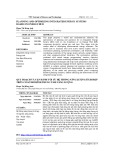

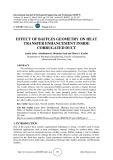
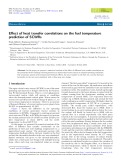
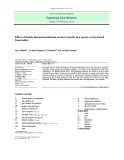
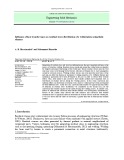









![Ngân hàng trắc nghiệm Kỹ thuật lạnh ứng dụng: Đề cương [chuẩn nhất]](https://cdn.tailieu.vn/images/document/thumbnail/2025/20251007/kimphuong1001/135x160/25391759827353.jpg)






